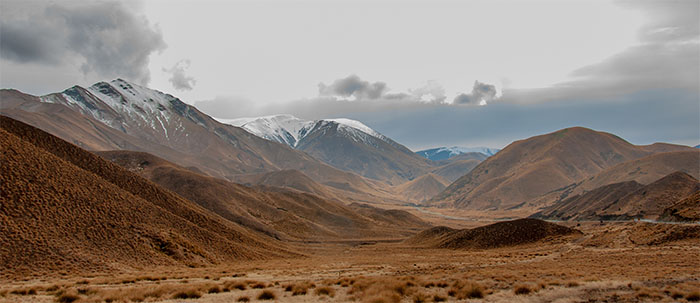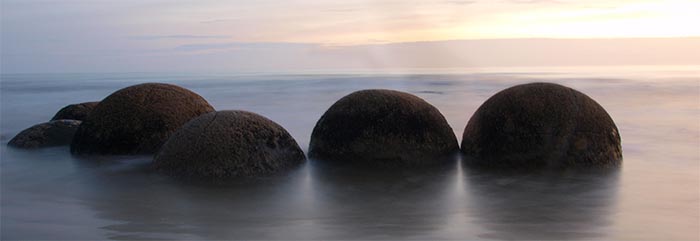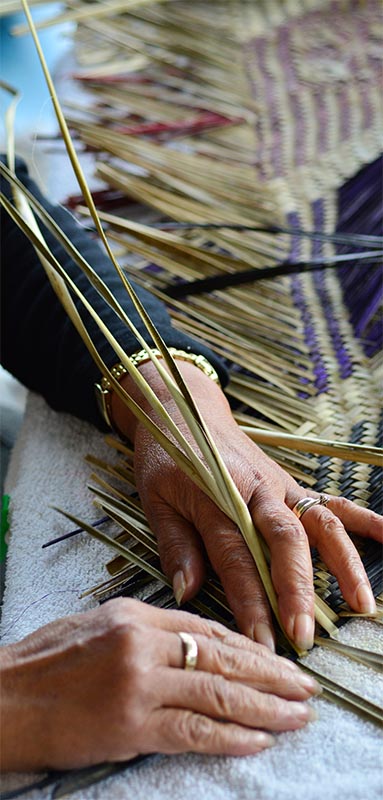The Otago story
Otago – from Ōtākou; the place where the red earth abounds.
On this page

Then
Abundant in resources and natural beauty, people have been drawn to the Otago region for centuries. For both Māori and Pākehā the region was initially a frontier, and a spirit of adaptation and enterprise endures in the region, its people, and its economy today.
The tūpuna of those who today whakapapa to the Otago region explored their way around plains and basins of the eastern and southern South Island within a short time of arrival to Te Waipounamu.
Otago Region(external link) — Te Ara: The Encyclopedia of New Zealand (2022, February 15)
Settlement was focused on the coast, where fish, seabirds and seals were plentiful, and pōhā could be made from southern bull kelp. Early Māori journeyed inland to harvest moa, tuna (eels), aruhe (bracken fernroot), weka and other terrestrial birds, pora (‘Māori turnip’), tikumu (Mountain Daisy), and taramea (Wild Spaniard). They also travelled to sources of silcrete and porcellanite – a stone of choice for tools used in moa butchery – and in search of highly-valued pounamu in the headwaters of rivers draining into Whakatipu Waimāori and Lake Wānaka.
By the early 19th century, the three iwi of Ngāi Tahu, Kāti Māmoe and Waitaha had blended into a single tribal entity.
Ōtākou Rūnaka: About Us(external link) (2022, February 15)
The tūpuna of these iwi laid claim to the eastern coast of Otago stretching inland to Whakatipu and Piopiotahi (Milford Sound). Significantly, those who signed the Treaty of Waitangi in 1840 at Ōtākou were descended from ancestors of all three tribes [Reference: Ibid].
The mana of Kāi Tahu, whose takiwā now encompasses the entire Otago region, is today upheld in Coastal Otago by the rūnaka of Ōtākou, Moeraki and Puketeraki and further inland by seven rūnaka that work together as shared kaitiaki of what is now the Queenstown Lakes area. The Otago Regional Skills Leadership Group (RSLG) is proud to be building links to the rūnaka in our region as we work to develop skills and workforce capacity together.
European sealers first arrived to Te Waiponamu in the 1790’s, and whalers had appeared in fertile southern waters by the 1830’s. They established shore stations in sheltered waters from Moeraki to Tautuku and further south.
Otago Region(external link) — Te Ara: The Encyclopedia of New Zealand (2022, February 15)
Planned European settlement then followed, and thanks to wool and gold Dunedin soon became New Zealand’s largest and wealthiest town. New Zealand’s first stock exchange was set up, the University of Otago was founded to train and upskill a growing local population and migration flows into Otago began from various points across the globe. The late 19th century saw Dunedin develop into a settlement defined by vigorous business activity, striking architecture and progressive movements for temperance, prohibition, women’s suffrage, and the rights of workers, women and children [Reference: Ibid].

Now
In 2022 approximately 245,300 people, or 4.8 % of New Zealand’s population, reside in Otago, with the Māori population currently sitting at around 20,000.
Regional Economic Activity Web Tool: Otago(external link) — Ministry of Business, Innovation and Employment (2022, 15 February)
Otago Region(external link) — Statistics New Zealand (2022, 15 February)
Dunedin remains the region’s principal and most populous centre, and the country's sixth largest urban area. The Otago region can be roughly divided into the three distinct sub-regions that the RSLG uses in our mahi; Dunedin, Coastal Otago – encompassing Waitaki and the Clutha District – and Inland Otago, encompassing Central Otago and Queenstown-Lakes Districts. These sub-regions are illustrated above.
Regional Gross Domestic Product (GDP) per capita is $57,807, below the national average of $63,556. Otago comprises 4% of New Zealand’s GDP as a whole and has had an annual growth rate of 6% per year over the past 10 years, equivalent to the national growth rate. Unemployment in Otago is 3%, sitting lower than the national rate of 3.2% (for the March 2022 quarter). Regional underutilisation at 9.4%, compared to 9.6% nationally.
Regional Economic Activity Web Tool: Otago(external link) — Ministry of Business, Innovation and Employment (2022, 15 February)
Average household income and average weekly rent also sit slightly below national averages [Reference: Ibid].
Prior to the COVID-19 pandemic, migrant workers made up approximately 12% of Otago’s workforce, significantly higher than in other regions and the national average of 5%.
OECD Economic Surveys: New Zealand(external link) — Organisation for Economic Co-operation and Development (2022, 15 February)
Otago has been hit hard by COVID-19. Border closures have interrupted international tourism and inward flows of migrant labour, throwing the regional economy into an uncertain state. The region, along with the rest of New Zealand, faces acute labour shortages across all industries, exacerbating the effects of an ageing regional population. Despite the whole region being affected by the pandemic, this is nuanced; while Queenstown Lakes is projected by Government to be the local authority area most heavily affected by COVID-19, Coastal Otago’s economy – based on agriculture and manufacturing – has remained relatively buoyant.
Prior to COVID-19, the sectors contributing the most to the region's GDP were Construction; Agriculture, Forestry and Fishing; Accommodation and Food Services; Rental, Hiring and Real Estate Services; and Healthcare and Social Assistance. The Cafe, Restaurant and Takeaway Food Services industry (a component of the Accommodation and Food Services sector) was the largest employer in Otago, comprising of 7,400 employees (6%) followed by Accommodation with 5,730 employees which reflects the region’s high Tourism output. In 2019, the Tourism industry contributed 13.8% of the region’s GDP, compared to 4.6% nationally.
Future
Going forward, Otago faces some complex challenges. Due to climate change, the region is predicted to experience significant decreases in seasonal snow, marked changes in the annual river flow cycle, an increased frequency of extremely windy days, and a marked rise in sea levels.(external link)
Climate change projections for the Otago region(external link) — Ministry for the Environment (2022, 18 April)

Put simply, our way of life is at risk. The Otago RSLG acknowledges that because no sector, business or occupation will be left unaffected, an awareness of climate change and what it means for our labour market must underpin our work.
Inequities will also continue to persist in Otago if left unaddressed. A key step that the RSLG will undertake to help mitigate these will be to better understand the nature of the Māori economy in Otago, including in which sectors Māori participate in as business owners and workers. Although we do not have a focus on the Māori economy in this first iteration of the RWP, the Otago RSLG is committed to making this a priority, including advocating for more comprehensive data on Māori in our region in the near future.
Despite these challenges, we are looking forward. Aotearoa’s borders are re-opening, allowing Otago to once again extend the manaakitanga that we are world-famous for, and to get our regional economy back on track. While labour and skills shortages remain a critical issue, economic predictions for many of our most important sectors are starting to improve as New Zealand reconnects with the world.
Wellbeing Budget 2022(external link) — New Zealand Government (2022, 18 April)
We have taken stock during the COVID-19 pandemic and are ready face the opportunities of the future – resolutely, together.

